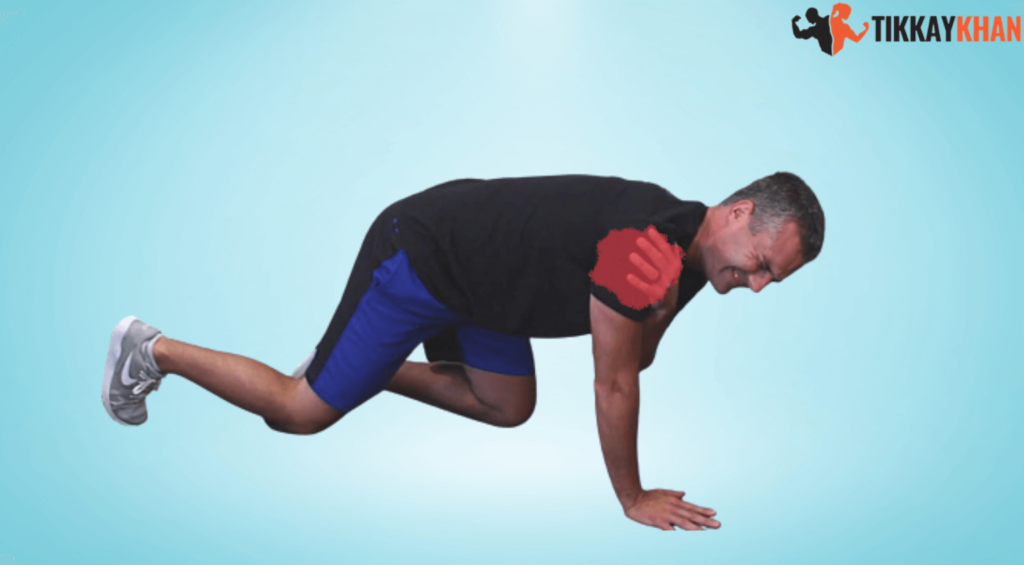The push-up is an important exercise for beginners to master in a strength training program. During the initial stages of strength training, individuals expect rapid improvement and significant strength gains.
If a beginner cannot perform a full push-up with proper form, they can modify the exercise by performing it on their knees or using an incline.
As the individual becomes stronger, they can progress to full push-ups and add variations to make the exercise more challenging. Push-ups are a versatile and effective exercise for building upper body strength and improving overall fitness.
By consistently practising push-ups and progressively increasing the difficulty, you can continue to see strength gains and improvements in your upper body. Beginners can expect significant improvement in upper body strength after two months of consistently doing push-ups.
When will you see the Results of Push-Ups?
It is essential to be consistent and do the exercise 3-4 times per week to see results from doing push-ups. This consistency creates a stimulus for muscle growth in the upper body and, after two months of consistent practice, can lead to significant improvements in strength.
How Many Push-ups Should you do to See Results?

- A good starting point for upper body strength training exercises is 3 sets of 6 repetitions.
- The number of sets and repetitions can be adjusted based on the difficulty of the exercise for the individual.
- Begin with a push-up variation that allows you to complete at least 3 sets of 6 repetitions.
- As you get stronger, gradually increase the number of sets to 4 and the repetitions to 12 with the same variation.
- Once you can complete 4 sets of 12 repetitions, add a set and decrease the repetitions back to 6.
For Example,
| Day 1 | 3×6 |
| Day 3 | 3×7 |
| Day 5 | 3×9 |
| Day 7 | 3×11 |
| Day 9 | 3×12 |
| Day 11 | 4×8 |
| Day 13 | 4×9 |
| Day 15 | 4×10 |
To see significant results from strength training, it is important to focus on gradually increasing the total number of push-ups you do daily.
As a beginner, you can expect significant muscle definition, size, and strength improvement after two months of focusing on a push-up progression.
To get started, choose a push-up variation in which you can complete 3 sets of 6 repetitions and gradually increase the sets and repetitions as you become stronger. Remember to rest when needed to allow your muscles to recover.
Are There Risks of Doing Too Many Push-Ups Daily?
Push-ups are a classic exercise that has been around for centuries, and with good reason. They are a simple yet effective way to strengthen your upper body and core muscles, and they can be done anywhere, anytime, with no equipment required.
But while push-ups are generally considered safe, it is possible to do too many of them and experience some negative consequences.
Overuse Damages

One of the biggest risks of doing too many push-ups is overuse damage. These types of injuries occur when you repeatedly perform repetitive motions without giving your muscles sufficient time to recover.
Common overuse injuries associated with push-ups include shoulder impingement, rotator cuff strain, and elbow tendinitis.
If you experience pain or discomfort in your shoulder, elbow, or rotator cuff after doing push-ups, it is essential to take a break and allow your muscles to recover.
Improper Form

Another risk associated with doing too many push-ups is poor form. If you are not performing push-ups correctly, you may be putting unnecessary stress on your joints and muscles, which can lead to injury.
Maintaining a proper push-up form is important, which includes keeping your body straight from your head to your heels, engaging your core, and avoiding arching or sagging your back.
How to Avoid the Risks

The good news is that there are simple steps you can take to avoid the risks associated with doing too many push-ups.
- The first step is to start with a proper warm-up. This will help to prepare your muscles for the exercise and reduce your risk of injury.
- Next, you have to use proper form when performing push-ups. This will help to ensure that you are engaging the correct muscles and avoiding unnecessary stress on your joints.
- If you are trying to decide if you are using the proper form, consider working with a personal trainer or physical therapist to improve your technique.
- You can adjust your push-up routine to reduce reps or switch to a different exercise that will still provide the same benefits without putting as much strain on your muscles and joints.